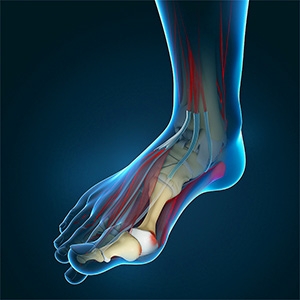The consequences of leaving bunions untreated
A bunion can develop in childhood, adolescence but more commonly in adulthood. Bunions always get bigger but the process usually takes years. So, once you have a bunion, is it safe to leave? What are the consequences if left to progress? Will it be harder to fix in the future? Will recovery after surgery be longer? These are the common questions I get asked in clinic when patients seek my help with their painful feet.
Thankfully, you will not come to serious harm from having a bunion but if left, they can cause significant secondary symptoms in other areas, which may require additional surgery at the same time as the bunion correction. These other problems range from minor hard skin under the bunion area to a severe dislocated toe.
The consequences of leaving bunions which then lead to secondary problems does make surgery more technically demanding, take longer to perform and recovery a little more complicated. I find it much easier to perform surgery on a bunion without these other issues and patients do have a more straightforward and simpler recovery.
Associated problems
A second hammer toe - The commonest consequence of leaving a bunion untreated is a second hammer toe. This is when the second toe starts to elevate and kink. Initially, you may not even notice this as its subtle but as it progresses, the toe knuckle may start to rub on the top of the shoe and cause pain with a callus. Padding and taping can help the symptoms but nothing can correct it without key hole surgery.
If left, the hammer toe can become severe and the joint connecting the toe to the foot can start to sublux upward and in extreme situations actually come out of joint permanently (dislocate).
Toe crowding - As bunions progress, the big toe also drifts toward the lesser toes. This can cause crowding of the toes, leading to pain. Sometimes the body may produce hard skin (callus) to try and protect the pressure between the toes. These calluses can be very painful and although removing them by a chiropodist can help alleviate symptoms, the root cause (the bunion) remains and they will reform. Only correcting the bunion will create space for the crowded toes and prevent the calluses returning and so ensuring the pain does not return.
Change of weight bearing points - Due to the change in the biomechanics of the foot as a bunion develops, your body weight may be transferred unfavourably to the balls of the lesser toes. This can cause pain under the sole of the foot (metatarsalgia). While an insole may help alleviate this symptom, the insole will create less space in the shoe for the bunion and may not be tolerated. If the metatarsalgia is significant, then additional key hole surgery may need to be performed on the lesser metatarsals to relieve the pain and pressure under the sole of the foot. This adds to the surgery recovery time as the foot will have a little more swelling for longer.
In conclusion - Having surgery to correct a bunion is not always an easy decision but leaving things also have consequences. It's best to seek advice early so you can be evaluated and Mr Gordon can give you his opinion if surgery is right for you now.

